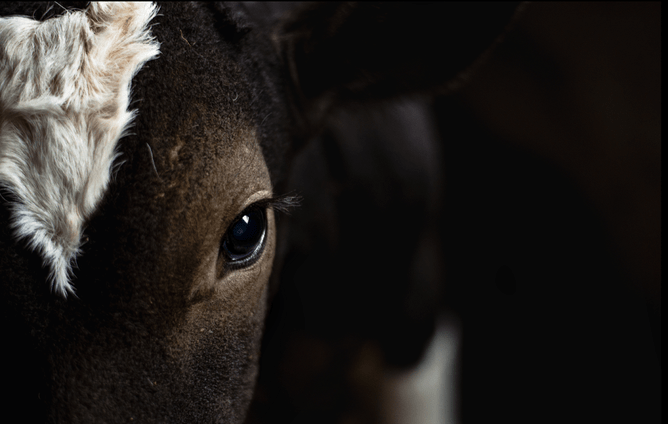Last season saw an increase in pink eye-related calls to our vet team.
Pink eye is the most common eye condition in cattle, affecting all breeds and ages, with calves being especially vulnerable.
Although most animals recover, serious cases can lead to permanent blindness. Pink eye is also economically important to cattle farmers as disease incurs significant costs, including:
treatments costs;
disruptions to seasonal management of stock;
production losses through reduced growth rates in young animals, and losses of milk production, weight gain and mating performance in adult animals.
Spread of pink eye and clinical signs
Pink eye usually peaks in spring and summer when environmental conditions are just right - strong sunlight (UV light), combined with anything that can irritate the eye (e.g. dry, dusty, windy conditions, mature stalky vegetation and nuisance flies).
Additionally, anything that affects the animal’s immunity (like BVD or IBR) will reduce their ability to fight the infection.
The first signs of disease are weepy eyes. Infected animals become light sensitive, try to avoid bright light and may appear to squint.
Blood vessels appear as a red ring on the surface of the eye, while infected animals may have creamy or opaque-appearing eyes. As the infection takes hold, ulcers can develop.
Prevention: vaccination is key
As mentioned above, wind, dust, flies, stalky vegetation and high stocking rates can be risk factors. Damage to the surface of the eye (scratching from grass seed heads) and ultraviolet radiation can predispose the eye to infection.
The bacteria can be present on flies and grass seed heads. Allowing cattle to graze low in stalky feed is a high risk for infection.
The best way to prevent the spread of pink eye is to vaccinate against it. Vaccination against pink eye is highly effective.
If you experienced this disease last season, you are more likely to experience it again, so vaccination could be an option.
Piliguard Pinkeye-1 Trivalent is a one-shot vaccine, ideally given before an expected outbreak. It helps develop and maintain immunity in cattle by generating antibodies against the infection-causing Moraxella bovis.
The time to vaccinate is 3 - 6 weeks before the onset of the pink eye season. Because conditions and animal health requirements vary from farm to farm, we recommend you contact us to discuss a management programme to prevent pink eye in your herd.
Advantages of vaccination
Vaccination has a number of advantages over treatment, including:
reducing the incidence and severity of disease, individual animal suffering and production losses;
avoiding advanced stages of disease - pink eye is often well advanced before animals are treated, and they often don’t respond well to treatment;
reducing the need for antibiotics and therefore the risk of bacterial resistance or residues;
it can be administered at convenient times when animals are already being mustered (e.g at drenching, calf marking);
reducing the need for yarding cattle in hot, dusty conditions to treat affected animals, thus reducing risk of further spread.
Treatment
Many eye disorders are treatable, particularly if picked up early. Bacterial diseases like pink eye or silage eye can be treated with topical antibiotic ointment, or, if very bad, your vet may need to give an injection into the eyelid tissue itself.
This can be expensive, difficult and time consuming. It also requires yarding animals – increasing the spread of disease within the herd. Advanced cases may require surgery.
So, next time you’re getting the cows in, take a moment to look at their eyes. If you notice anything unusual, draft them out and have a closer look, then call your vet if it looks bad. We’re always keen to see weird and wonderful cases!

